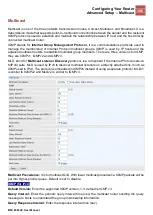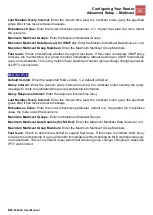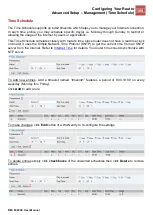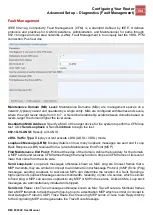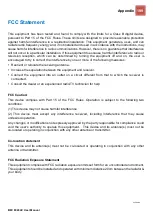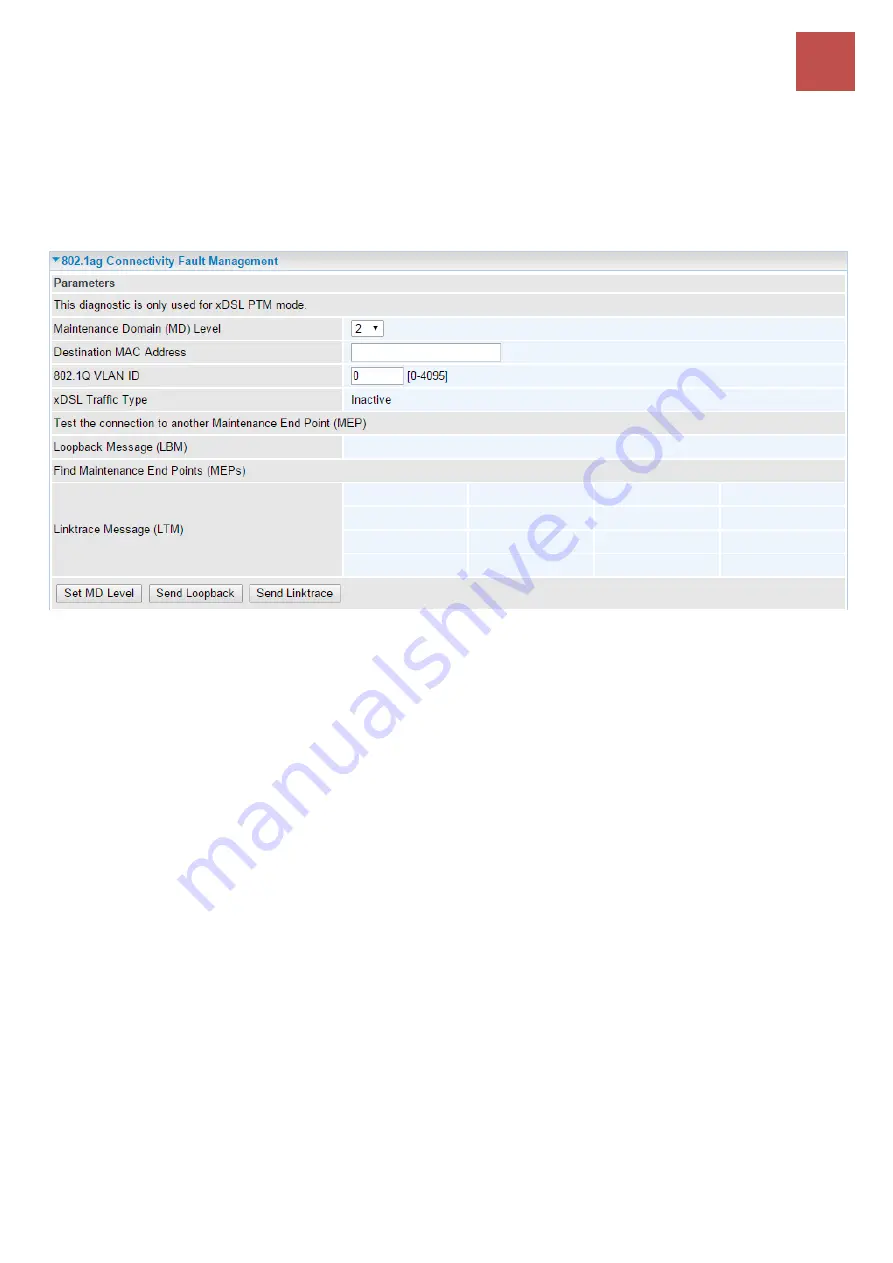
Configuring Your Router
Advanced Setup
– Diagnostics (Fault Management)
194
BEC 8920AC User Manual
Fault Management
IEEE 802.1ag Connectivity Fault Management (CFM) is a standard defined by IEEE. It defines
protocols and practices for OAM (Operations, Administration, and Maintenance) for paths through
802.1 bridges and local area networks (LANs). Fault Management is to uniquely test the VDSL PTM
connection; Push service
Maintenance Domain (MD) Level:
Maintenance Domains (MDs) are management spaces on a
network, typically owned and operated by a single entity. MDs are configured with Names and Levels,
where the eight levels range from 0 to 7. A hierarchal relationship exists between domains based on
levels, larger the domain higher the level value.
Destination MAC Address:
Specify a MAC of the target device for the system to perform a CFM loop
test. Click
Send Loopback
or Send
Linktrace
to begin the test.
802.1Q VLAN ID:
Specify
a VLAN ID
xDSL Traffic Type:
Display current activate xDSL (ADSL / VDSL) mode
Loopback Message (LBM):
Display details on how many loopback messages are sent and if Loop
Back Response (LBR) received from a remote Maintenance End Point (MEP)
Find Maintenance End Point:
Points at the edge of the domain, define the boundary for the domain.
A MEP sends and receives CFM frames through the relay function, drops all CFM frames of its level or
lower that come from the wire side.
Send Loop-back:
Loop-back messages otherwise known as MAC ping are Unicast frames that a
MEP transmits, they are similar in concept to an Internet Control Message Protocol (ICMP) Echo (Ping)
messages, sending Loopback to successive MIPs can determine the location of a fault. Sending a
high volume of Loopback Messages can test bandwidth, reliability, or jitter of a service, which is similar
to flood ping. A MEP can send a Loopback to any MEP or MIP in the service. Unlike CCMs, Loop back
messages are administratively initiated and stopped.
Send Link Trace:
Link Trace messages otherwise known as Mac Trace Route are Multicast frames
that a MEP transmits to track the path (hop-by-hop) to a destination MEP which is similar in concept to
User Datagram Protocol (UDP) Trace Route. Each receiving MEP sends a Trace route Reply directly
to the Originating MEP, and regenerates the Trace Route Message.

